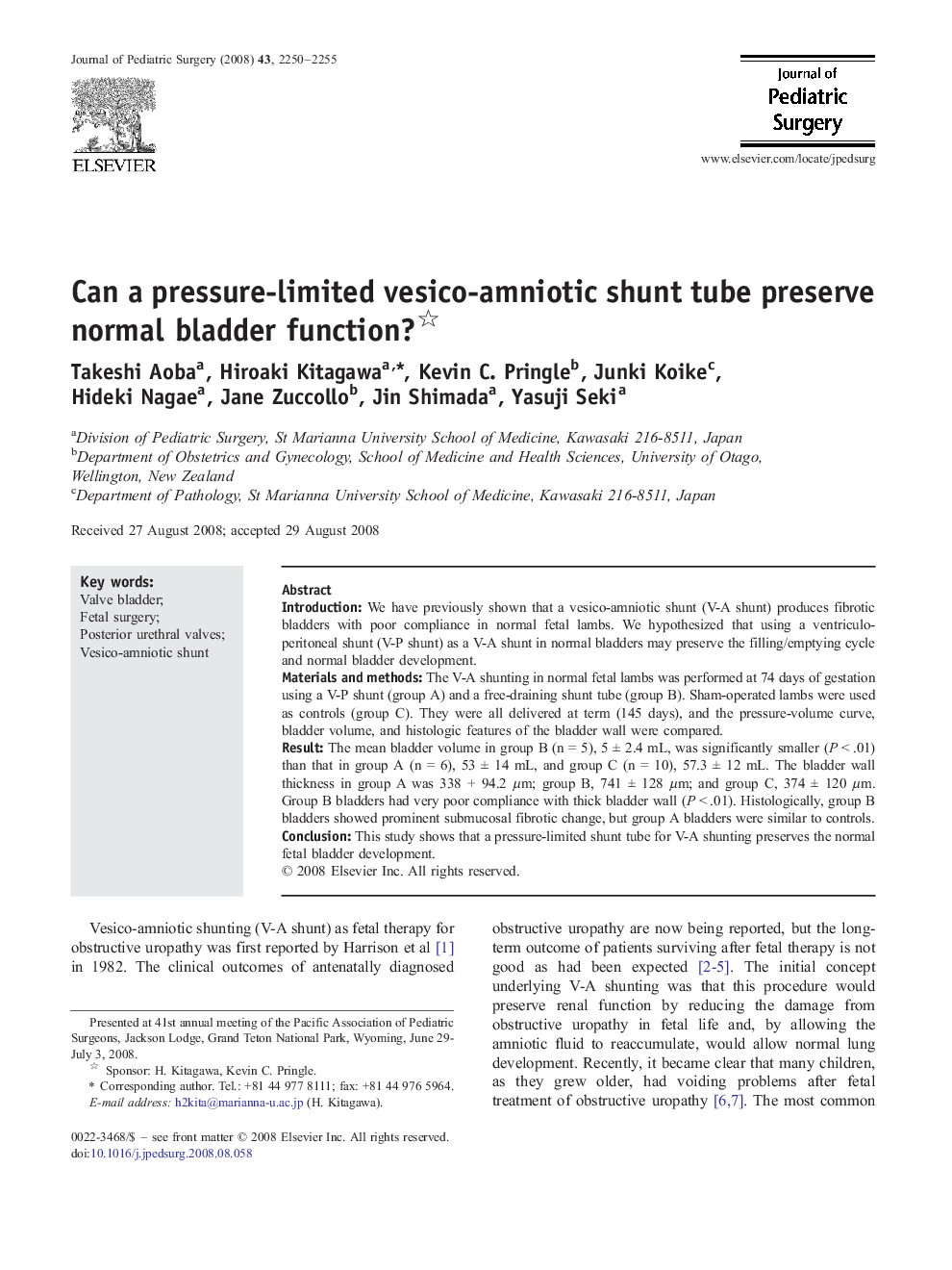| Article ID | Journal | Published Year | Pages | File Type |
|---|---|---|---|---|
| 4158097 | Journal of Pediatric Surgery | 2008 | 6 Pages |
IntroductionWe have previously shown that a vesico-amniotic shunt (V-A shunt) produces fibrotic bladders with poor compliance in normal fetal lambs. We hypothesized that using a ventriculo-peritoneal shunt (V-P shunt) as a V-A shunt in normal bladders may preserve the filling/emptying cycle and normal bladder development.Materials and methodsThe V-A shunting in normal fetal lambs was performed at 74 days of gestation using a V-P shunt (group A) and a free-draining shunt tube (group B). Sham-operated lambs were used as controls (group C). They were all delivered at term (145 days), and the pressure-volume curve, bladder volume, and histologic features of the bladder wall were compared.ResultThe mean bladder volume in group B (n = 5), 5 ± 2.4 mL, was significantly smaller (P < .01) than that in group A (n = 6), 53 ± 14 mL, and group C (n = 10), 57.3 ± 12 mL. The bladder wall thickness in group A was 338 + 94.2 μm; group B, 741 ± 128 μm; and group C, 374 ± 120 μm. Group B bladders had very poor compliance with thick bladder wall (P < .01). Histologically, group B bladders showed prominent submucosal fibrotic change, but group A bladders were similar to controls.ConclusionThis study shows that a pressure-limited shunt tube for V-A shunting preserves the normal fetal bladder development.
